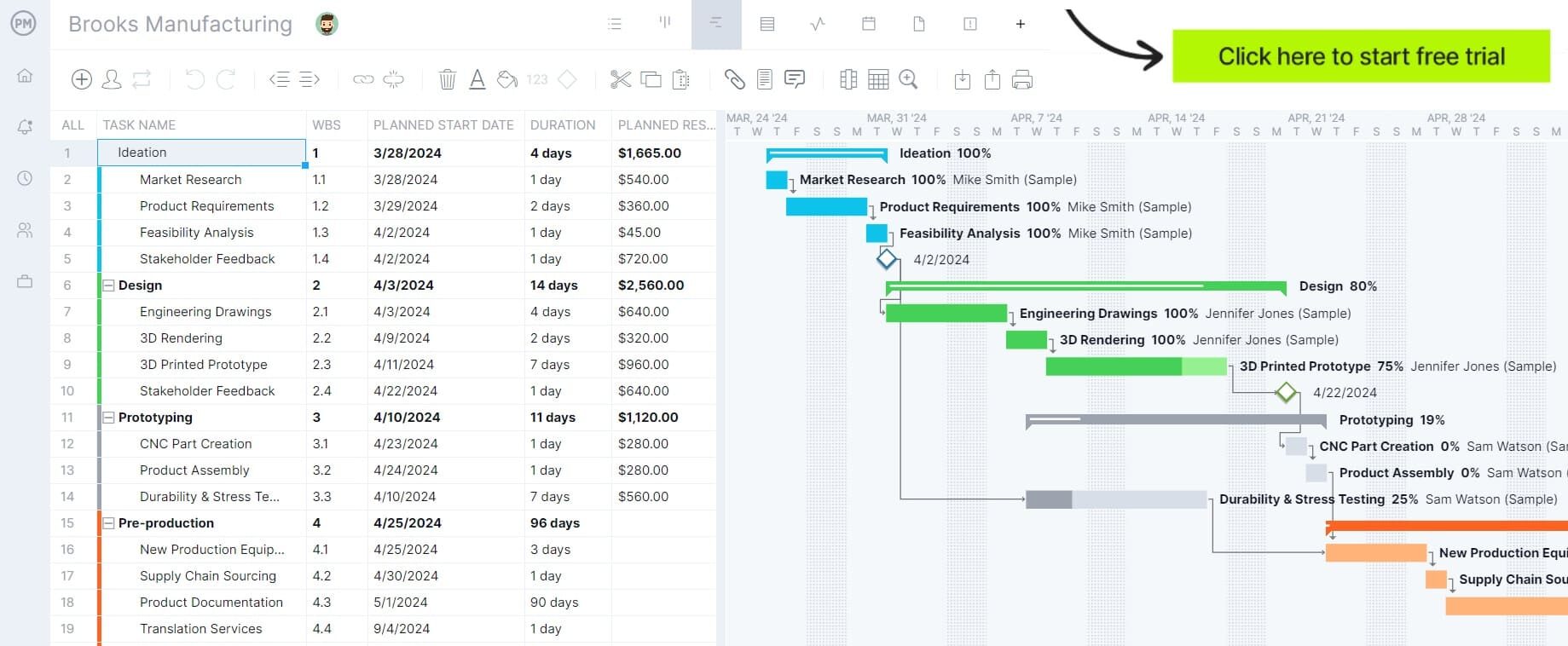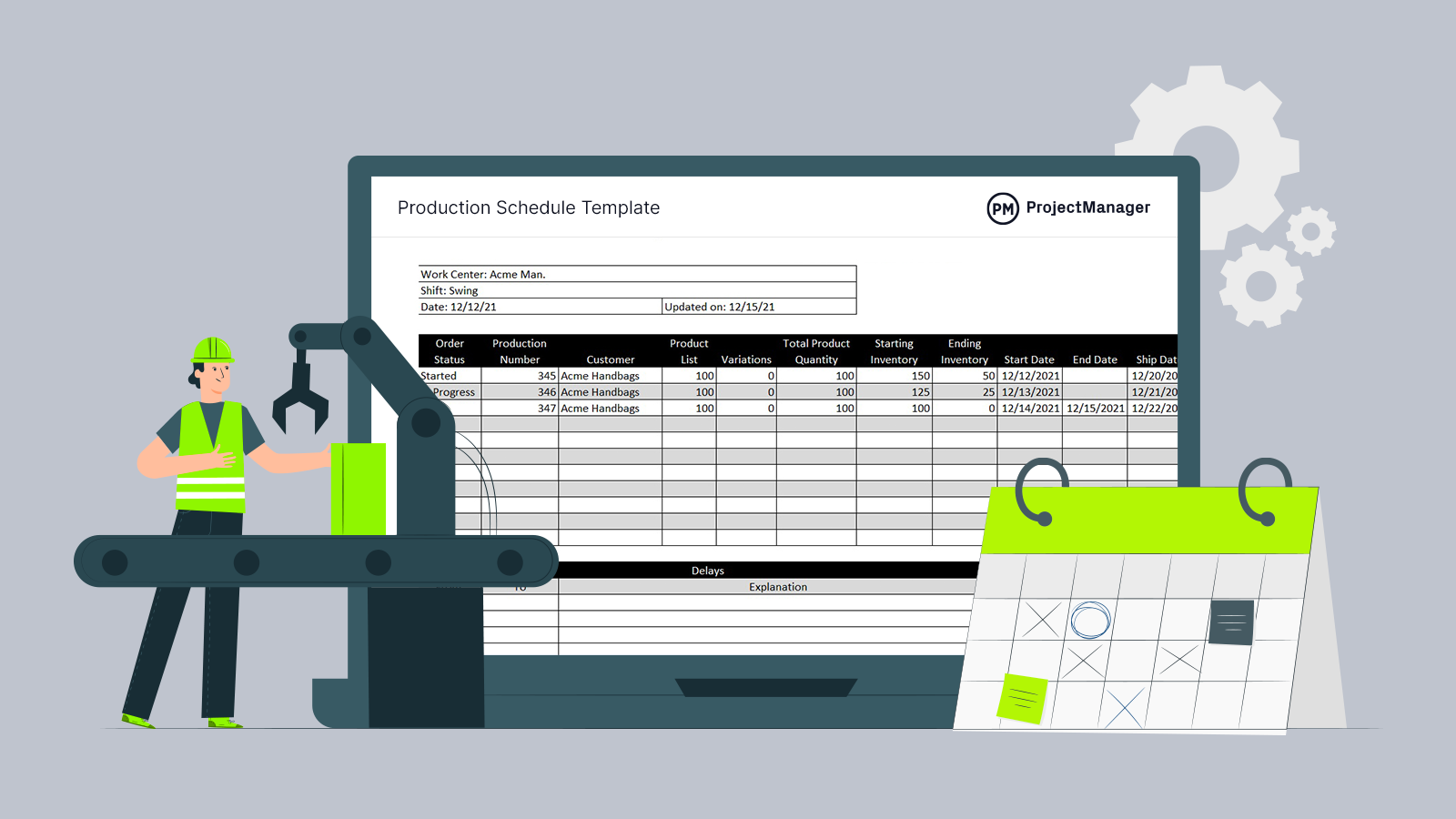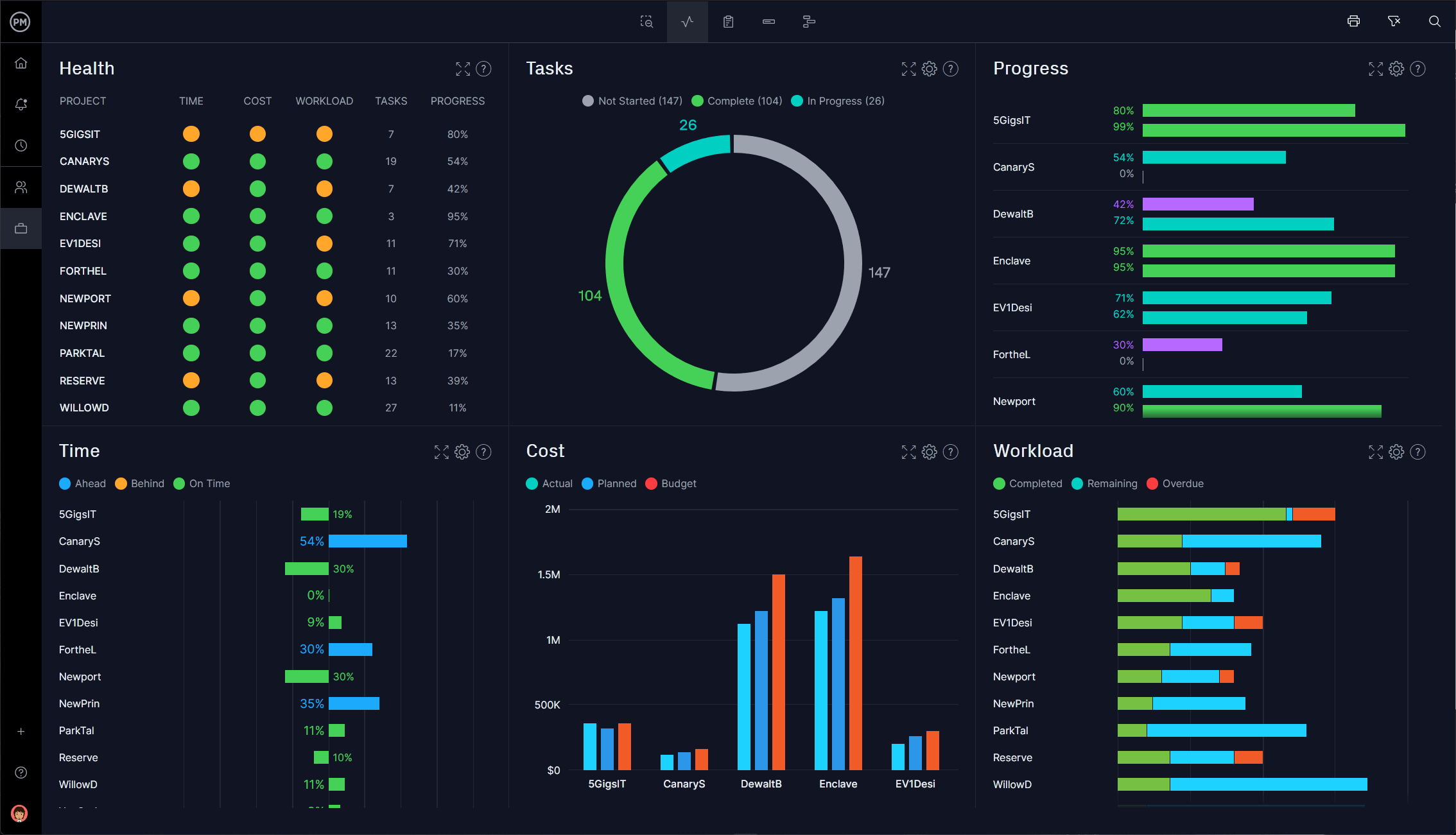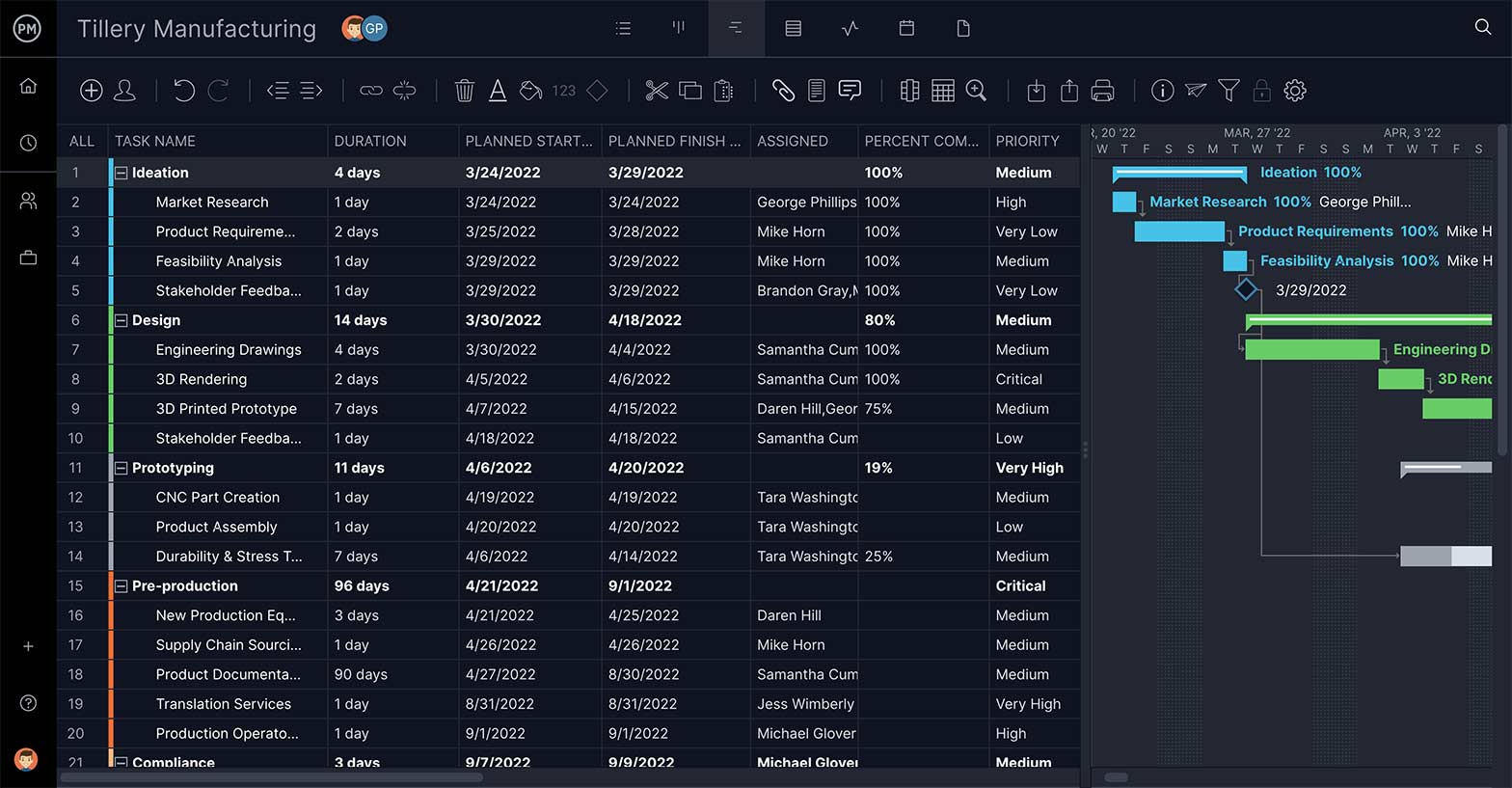Manufacturers need to have a process by which to make or assemble their products. Before they go into production, therefore, they must engage in what’s called process planning. This is an important step before manufacturing and must be thoroughly understood.
Learn what process planning is, including why it’s so important and the different types there are. Then find out the steps to process planning and see what a manufacturing process plan is and why it benefits production.
What Is Process Planning?
Process planning is how manufacturers determine the sequence of operations that they’ll take to produce a part or make an assembly leading to the finished goods. When working in a job shop that produces one-of-a-kind products or where the same product is mass-produced, process planning is incredibly important.
However, all manufacturers benefit from process planning. That’s because process planning is the bridge between product design and product manufacturing. The purpose of process planning is to develop the most efficient sequence of operations. This includes having the right equipment and tools and meeting product requirements and specifications.
All of this is done to reduce costs and increase productivity. Manufacturers have two ways to achieve these goals; one is manual process planning and the other is using software to aid in process planning.
ProjectManager is award-winning software that helps manufacturers with process planning by using tools such as our award-winning Gantt charts. You can create in-depth project plans that have drag-and-drop scheduling to adjust production timelines in real time. Use the Gantt chart to set milestones, link dependencies and identify the critical path for better execution. It’s never been easier to find the most efficient sequence of operations. Get started with ProjectManager today for free.

Benefits of Process Planning
Any kind of planning is always important in manufacturing or, frankly, any industry. You never want to wing it, not when there are money and people’s livelihoods involved. But that’s just a general benefit, there are more specific reasons why manufacturers want to use process planning.
For one, it helps manufacturers evaluate other ways of operating when it comes to the production of their goods. That way they can look at where they’re maximizing resource utilization and how they can better optimize throughput from the start of the production life cycle. In other words, they can better strategize their manufacturing operations to deliver on their goals.
Process planning also gives manufacturers the flexibility to quickly shift production if they find a better way of doing things, such as increasing production efficiencies. It also helps deliver consistent quality over multiple production lines or plants. That means reducing the time to market, which improves customer satisfaction and retention.
Types of Process Planning
There are three main types of process planning: manual process planning, computer-aided process planning and generative process planning. Let’s take a moment to explore each of these.
Manual Process Planning
Also known as man-variant process planning, this is the most commonly used type of process planning. A process planner will select the combination of processes needed to produce the finished part. These are engineering drawings that define the part requirements and the availability and capabilities of machines and processes. The selection leads to criteria, such as production costs or time, machine utilization and routine will also impact the plan. Usually, the criteria are based on a family of parts rather than the processes and machines needed to produce a single part.
Computer-Aided Process Planning
This is a more efficient type of process planning, less tedious and less likely to make mistakes. Automating process planning systems removes the human element in the steps between preparing engineering drawings and finishing the process plan for all manufacturing operations. There still must be human oversight to ensure compatibility with the available processes. Whether to turn, mill or stamp is determined by the product requirements, quantities ordered and capabilities of the processes. This still reduces process planning time, and the skills required of a process planner and makes for more consistent and accurate plans that increase productivity and reduce costs.
Generative Process Planning
Generative process planning takes in-process information and uses it to automatically create a process plan for a new component. This information is pulled from manufacturing databases and doesn’t involve much human oversight. After reviewing the design, the operation sequence is automatically produced. Of course, the software must be encoded with knowledge of manufacturing. In fact, machine selection, tool selection, process optimization and more can also be automated by this system. There are hurdles to clear, however, such as transforming component data and decision rules into the system.

Get your free
Production Schedule Template
Use this free Production Schedule Template for Excel to manage your projects better.
What Is a Manufacturing Process Plan?
A manufacturing process plan defines the steps from product design and development to the manufacturing processes used to create the finished product. It includes operation sequencing, machine process planning, assembly process planning and assembly line planning.
What Should You Consider When Creating a Process Plan?
When you’re putting together a process plan, you’ll want to be flexible. For example, you might need to restructure the engineering bill of materials (all materials and instructions needed for assemblage) so that it reflects the realities of your manufacturing situation. Some assemblies will be made in-house and others not. The process plan needs to bring all this together in one plan.
You’ll also have to think about new relationships between parts. Processes that have multiple parts need to have specific steps to be properly completed. Therefore, you’ll have to manage three aspects; the resources, tools and machines you’re using in your production process. These will be used in different relations to one another depending on the assembly.
There’s also the manufacturing bill of materials, which is different from the engineering bill of materials. That’s because manufacturing involves the complexity of turning one unique structure into another. These steps must be planned out in order not to miss something important.
The manufacturing process plan must also meet the engineering parts, CAD visuals, requirements, deliverables and other assets’ quality expectations. Therefore, the plan must provide information to ensure that these processes are accurate and efficiently done while providing transparency to other teams, such as engineering, in the overall process.
Free Production Schedule Template
There are many things to think about when creating a process plan in manufacturing, and you can’t forget to create and implement a production schedule to keep your project on track. Download this free production schedule for Excel to track order status, product quantities, production dates and more.

Process Planning Steps
To implement your process plan, you have to follow several steps. Following these steps helps find the most efficient path from product design to product manufacturing to accomplish your objectives. Below are the basic steps you should take.
1. Identify Inputs and Outputs of Your Manufacturing Process
Inputs are the materials and other resources that you’ll use to create the finished product. These can be labor, materials, facilities, equipment and so forth. The outputs are the finished products that’ll be delivered to customers. Therefore, it’s crucial to understand what will go in and come out of your manufacturing process to manage that process, reduce waste and increase productivity.
2. Map Out Your Workflows
The workflow maps the activities that will achieve a certain result. This is a crucial part of the process plan as it visualizes processes from start to finish and helps make clear each step in that path, including resources needed to complete the work. It’s also a quality assurance measure as workflows are repeatable and consistent in producing your products.
3. Create Documentation for Production Operators
These documents include everything from production prints to schematics and circuit layouts for associated electronics. You’ll also want to create a bill of materials to gather all the resources needed to build your product and directions for how it will be assembled. Other documentation includes status reports, invoices, batch records to identify job numbers and personnel.
4. Train Your Employees
Plan training and exercises for your personnel. This is an important step to make sure everyone knows what they have to do and how they should do it. This step is critical to building confidence in your workforce as well as motivating them to do their jobs well.

ProjectManager Helps With Process Planning
Process planning takes users’ instructions and from there figures out what is necessary to turn inputs into outputs. That process is facilitated by project management software that can help you track schedules and monitor progress. ProjectManager is award-winning software that gives you the tools you need to plan, manage and track production in real time. Our tool gives you the features you need to sequence operations and prepare for manufacturing and then make sure you’re staying on track during production.
Track Production Schedules With Gantt Charts
Production schedules rely on resource planning, estimation and forecast demand as well as knowing your inventory and monitoring progress. Our robust Gantt charts allow you to organize tasks, resources and costs. Then you can set a baseline to capture the process plan and be able to compare it to your actual progress in real time. Now you can quickly catch issues that are causing delays and easily adjust the Gantt chart to make production more efficient.

Monitor Progress & Budgets With Real-Time Dashboards
Of course, once production is running, process planners need to keep an eye on progress to make sure everything is going as planned. Setting the baseline in the Gantt means that you can monitor production from various tools on our software. For instance, you can get a high-level view of production on one or all of your projects with the real-time dashboard. It automatically collects data and displays metrics such as time, cost, workload and more in easy-to-read graphs and charts. Unlike lightweight tools, there’s no time-consuming configuration required, even with our portfolio dashboard that shows metrics across all of your projects.

Other tools can help with process planning. For example, our customizable reports are easy to generate and provide more detail on aspects of production, such as timesheets, variance and status reports. All can be filtered to focus only on the data you’re interested in to better run your production line. Reports can also be shared in a variety of formats or printed out to keep stakeholders updated.
ProjectManager is online project management software that empowers process planners to plan, manage and track production in real time. There are also task management, resource management and risk management features that keep manufacturing running smoothly. Get started with ProjectManager today for free.


